Marginal Talent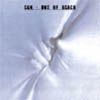
Germany's Can is certainly the most influential band to emerge from thefirst wave of krautrock. Their first six studio albums are unparalleledmasterpieces of experimental rock, effortlessly combining jazz andclassical influences with psychedelic guitar rock, ethnic percussionand unhinged vocal improvisations. The past few years have seen theentire back catalog re-mastered and re-released in deluxe CD and LPeditions on Can's own Spoon imprint. Every album, that is, except forthe much-maligned 1978 release
Out of Reach,which Can seem eager to completely omit from their discography. Assuch, it has long remained one of their rarest and least talked aboutalbums. Fortunately for completists, Marginal Talent has now issued are-mastered CD of this most obscure of Can records. The received wisdomis that Can began to decline when Japanese vocalist Damo Suzukideparted to join a religious sect after 1976's
Future Days.While this is somewhat accurate, hindsight has been kinder to thelater, more homogenized Can albums. We can now retrospectively admitthat
Soon Over Babaluma and
Flow Motion both containgreat moments, displaying the same ingenious instrumental fusion thatcharacterized Can's most fertile creative period. Record collector loredemands that
Out of Reach be a similarly underrated, unsung gem. Unfortunately, this is just not the case.
Out of Reach is one of Can's worst albums, and while it has its moments, it must be relegated to the same pile as
Saw Delight and
Inner Space- disappointing latter-day efforts that make convincing arguments thatCan should have retired earlier. The main reason for this drop inquality was most likely the departure of bassist Holger Czukay,founding member and innovator. To make up for Czukay's noticeableabsence, Rosko Gee and Reebob Kwaku-Baah of the execrable prog-rockband Traffic joined the line-up. Their influence is an unwelcome one,to put it mildly. Gee and Kwaku-Baah bring with them a penchant forpointless jazz-inflected solos that drone on endlessly, watering downthe usually explosive chemistry between Irmin Schmidt, Jaki Liebezeitand Michael Karoli. "Serpentine" introduces this incarnation of Can,with a mildly engaging marriage of ethnic instrumentals and elevatorjazz. The music is far from terrible, but compared to dynamicmasterpieces like
Ege Bamyasi and
Tago Mago, it'spositively snore-inducing. "Pauper's Daughter and I" is livelier, butis marred by the badly delivered nursery rhyme lyrics from Rosko Gee."November" is by far the best track on the album, the one song wherethe fuzz guitar really lets loose, and the rest of the band'simprovisations build a trippy, pitch-perfect backdrop for Karoli'samazing soloing. "Seven Days Awake" starts out on an interesting note,but soon declines into pointless repetition. "Give Me No 'Roses'"sounds like a bad Traffic outtake, as does the sub-par reggae of "LikeInobe God". The one-and-a-half minutes of "One More Day" is the album'stribal swansong. This is far from essential Can, even more troublingthan 1989's ill-advised reunion album
Rite Time. If you are looking to collect every Can album, put
Out of Reach right at the bottom of the list.
samples:
 Andrew Schrock's Grounded Records promises to release music fromartists who are forward thinkers in today's soundscape. If thiscompilation is any indication, the label has a strong future. Followingthe release of a handful of singles, Grounded Soundis the label's first CD release, featuring tracks donated by artistsSchrock respects as well as some repeat participants the label hasworked with previously, such as Greg Davis. All of the artists involvedgenerate ambient compositions with some level of digital processing.Several of them reveal manic tendencies, as well, with structures thatshuffle and shiver above the static sounds below. The end result is anextremely pleasurable experience, one that puts the mind and body atease with an elegant mix of similar styles yet different approaches.E*rock's "Ice Museum," for instance, is a slow-build hum withoccasional beeps and swishes and lovely vocals, while Melodium'sacoustic guitar-based "Impropre" starts! gently enough but then getsinterrupted and broken by all sorts of computer madness. Both tracksproduce the same feeling, but through different means and withdifferent components. Every track is a standout, from the here andthere stutter of Misterinterrupt, to the drum and tumble of DonMennerich, and on to the glow and gurgle of Charles Atlas. It's amazinghow cohesive the compilation is considering the fact that twelveartists participate, and although a few of the tracks are previouslyreleased elsewhere, it's full of new music that stimulates as well asit impresses.
Andrew Schrock's Grounded Records promises to release music fromartists who are forward thinkers in today's soundscape. If thiscompilation is any indication, the label has a strong future. Followingthe release of a handful of singles, Grounded Soundis the label's first CD release, featuring tracks donated by artistsSchrock respects as well as some repeat participants the label hasworked with previously, such as Greg Davis. All of the artists involvedgenerate ambient compositions with some level of digital processing.Several of them reveal manic tendencies, as well, with structures thatshuffle and shiver above the static sounds below. The end result is anextremely pleasurable experience, one that puts the mind and body atease with an elegant mix of similar styles yet different approaches.E*rock's "Ice Museum," for instance, is a slow-build hum withoccasional beeps and swishes and lovely vocals, while Melodium'sacoustic guitar-based "Impropre" starts! gently enough but then getsinterrupted and broken by all sorts of computer madness. Both tracksproduce the same feeling, but through different means and withdifferent components. Every track is a standout, from the here andthere stutter of Misterinterrupt, to the drum and tumble of DonMennerich, and on to the glow and gurgle of Charles Atlas. It's amazinghow cohesive the compilation is considering the fact that twelveartists participate, and although a few of the tracks are previouslyreleased elsewhere, it's full of new music that stimulates as well asit impresses.

 After two years of experimentation and intense exploration, the artcollective known as Cerberus Shoal are finally prepared to unleash anew sound on the unsuspecting populace. The fusion with Tarpigh nowdefunct, the Shoal have been working with different artists on theirsplit EP series, seemingly searching for the right meld of identitieswith which to continue. Though those EPs showed some impressive, whileconvoluted, structures, this is where the real meat is. Chaiming the Knoblessoneis Cerberus Shoal at their most stunning, most ethereal, mosttheatrical, and most confused; and all of that has never sounded socarefully planned. It's a brand new language almost, or an originaltake on storytelling, melding equal parts rock, jazz, folk, and MiddleEastern music into a new type of spiritual. These are the songs of atribe of modern minstrels, detailing the woe and glory of a people whohad no hope but still strived. Perhaps it's a musical oral history,with a little bit of dramatic infusion and random leanings. With fivetracks over the eleven minute mark, Chaiming is also like anight at the opera of the human mind, with longer movements making wayfor grand exploits to taint your dreams and synapses. "Apatrides"starts with low chants and "oohs" that build to a chorus of madmenchanting random thoughts about "river skins" and "shadow-bentreveries." Suddenly, the twisted sounds of trumpets and accordionsannounce the arrival of a brain dance, where psychoses and neurosesmingle and mate with abandon. It departs just as suddenly, as theelectron thought bursts of "Mrs. Shakespeare Torso" arrive, whichdissolve into sweet voices, more accordion, and warped scales onstringed instruments. The climax of Act One, though, "Sole of Foot ofMan," is the most pure approach of all, with acoustic guitar strums,swirls of electric instruments, and strained male vocals joined byghostly female harmony. It has hints of every era of Cerberus Shoalwith the flavorings of the future, and is a beautiful and bravearrangement. The intermission of "A Paranoid Home Companion" isfrightening with its helium computer voice and trial of views that doesnot fully impress as a song, but as a scene it is fantastic. Act Twosoars above it all, with "Ouch" continuing with the madman chorus andthe ghostly harmony, but relying more on stringed instruments andstructured percussion. The struggle explodes at the end of the track,and then the aftermath is detailed in calmer tones and occasionalbursts of singing for the remainder of the album. As music, this is adifficult piece, as these compositions are jarring and loose, notadhering to any structure; plus it must be listened to in its entiretyto be appreciated. But as a piece of theatre, this is bold stuff,capable of changing whole landscapes with its power. Cerberus Shoalhave found a new direction worth pursuing, and anyone along for theride is guaranteed to have a frighteningly good time. Chaiming the Knoblessoneis available now on North East Indie's site and on September 2nd instores, when a second full-length will also be available on thewebsite.
After two years of experimentation and intense exploration, the artcollective known as Cerberus Shoal are finally prepared to unleash anew sound on the unsuspecting populace. The fusion with Tarpigh nowdefunct, the Shoal have been working with different artists on theirsplit EP series, seemingly searching for the right meld of identitieswith which to continue. Though those EPs showed some impressive, whileconvoluted, structures, this is where the real meat is. Chaiming the Knoblessoneis Cerberus Shoal at their most stunning, most ethereal, mosttheatrical, and most confused; and all of that has never sounded socarefully planned. It's a brand new language almost, or an originaltake on storytelling, melding equal parts rock, jazz, folk, and MiddleEastern music into a new type of spiritual. These are the songs of atribe of modern minstrels, detailing the woe and glory of a people whohad no hope but still strived. Perhaps it's a musical oral history,with a little bit of dramatic infusion and random leanings. With fivetracks over the eleven minute mark, Chaiming is also like anight at the opera of the human mind, with longer movements making wayfor grand exploits to taint your dreams and synapses. "Apatrides"starts with low chants and "oohs" that build to a chorus of madmenchanting random thoughts about "river skins" and "shadow-bentreveries." Suddenly, the twisted sounds of trumpets and accordionsannounce the arrival of a brain dance, where psychoses and neurosesmingle and mate with abandon. It departs just as suddenly, as theelectron thought bursts of "Mrs. Shakespeare Torso" arrive, whichdissolve into sweet voices, more accordion, and warped scales onstringed instruments. The climax of Act One, though, "Sole of Foot ofMan," is the most pure approach of all, with acoustic guitar strums,swirls of electric instruments, and strained male vocals joined byghostly female harmony. It has hints of every era of Cerberus Shoalwith the flavorings of the future, and is a beautiful and bravearrangement. The intermission of "A Paranoid Home Companion" isfrightening with its helium computer voice and trial of views that doesnot fully impress as a song, but as a scene it is fantastic. Act Twosoars above it all, with "Ouch" continuing with the madman chorus andthe ghostly harmony, but relying more on stringed instruments andstructured percussion. The struggle explodes at the end of the track,and then the aftermath is detailed in calmer tones and occasionalbursts of singing for the remainder of the album. As music, this is adifficult piece, as these compositions are jarring and loose, notadhering to any structure; plus it must be listened to in its entiretyto be appreciated. But as a piece of theatre, this is bold stuff,capable of changing whole landscapes with its power. Cerberus Shoalhave found a new direction worth pursuing, and anyone along for theride is guaranteed to have a frighteningly good time. Chaiming the Knoblessoneis available now on North East Indie's site and on September 2nd instores, when a second full-length will also be available on thewebsite.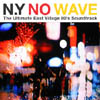 Coinciding with the release of Mutant Disco, Ze unleashes another collection, this time concentrating on their other label specialty. No-wave was a short-lived outgrowth of post-punk concentrating on short, powerful bursts of atonal rock, with agitated vocals, primitive percussion and explosions of free jazz. The no-wave current lives on today through current bands like Erase Errata, Q and Not U and Liars that have obviously been influenced by the original NYC zeitgeist. Ze Records is using a relatively loose definition of the genre for this collection, including slightly off-topic contributions from synth-pop pioneers Suicide and more dance-oriented material from Lizzy Mercier Descloux. It all holds together well, though, making this a worthwhile compilation containing many previously hard-to-find tracks.
Coinciding with the release of Mutant Disco, Ze unleashes another collection, this time concentrating on their other label specialty. No-wave was a short-lived outgrowth of post-punk concentrating on short, powerful bursts of atonal rock, with agitated vocals, primitive percussion and explosions of free jazz. The no-wave current lives on today through current bands like Erase Errata, Q and Not U and Liars that have obviously been influenced by the original NYC zeitgeist. Ze Records is using a relatively loose definition of the genre for this collection, including slightly off-topic contributions from synth-pop pioneers Suicide and more dance-oriented material from Lizzy Mercier Descloux. It all holds together well, though, making this a worthwhile compilation containing many previously hard-to-find tracks.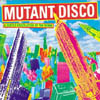 In 1981, anunderground New York label known for their influential roster of discoand no-wave artists released a seminal compilation of some of theirbest singles.With this release, Ze Records both solidified the definition of theleftfield disco movement and gave the genre a name that stuck. It's aname that conjures up images of tentacled, post-nuclear fallouthumanoids letting loose and getting down on the crowded dance floor ofStudio 54. The intention was to showcase the edgier, more avant-gardeside of New York disco. The original LP contained only six songs, butfor the new CD re-issue, Ze Records has expanded it into a stunningtwo-CD set containing a total of 25 tracks, the bulk of their relevant12" dance output from 1979 to 1981. This music was years ahead of itstime, and will sound particularly relevant to those tuning into thesecond wave of avant-dance, characterized by current acts like Out Hud,Metro Area, Playgroup, and LCD Soundsystem. Many recent anthologies,such as Strut's Disco Not Disco series and Soul Jazz's New York Noise have attempted to document the scene, but Ze Records has the historical advantage of including the entire original Mutant Disco LP. Also, the overall focus on Mutant Discois much clearer, and the compilation boasts many rare tracks notavailable elsewhere other than the highly collectible original LPs,which frequently change hands for prices as high as $500. Was (Not Was)appear three times across the two discs. Their first track "Wheel MeOut" is a densely layered groove, combining sampling techniques, sleazyrock and bad jazz into an infectious disco-house number. Bill Laswell'sartist-collective Material produced a clutch of important singles andLPs in the early 80's, but for sheer fun it would be hard to beat therock-disco collision of "Bustin' Out," with vocals from soul diva NonaHendryx. Cristina's contribution is the first of several lightweightdisco remakes of classic rock songs on the collection, this one a coverof The Beatles' "Drive My Car" (produced by John Cale of VelvetUndergound, no less). I have never really liked the Latin dancepastiche of Kid Creole and the Coconuts, but their two contributions toMutant Disco are surprisingly addictive, especially thedislocated mambo of "Annie I'm Not Your Daddy." I'd rather shake my assto this than Los Del Rio any day of the week. The Aural Exciters areone of the more mysterious acts on this collection, appearing with apair of truly odd, dub-influenced disco deconstructions. It is nearlyimpossible to find any information on this band, but it's hard to denythe weird power of "Emile (Night Rate)," with its off-kilter percussionand spooky, echo-chambered chorus of women's screams. James White andthe Blacks (AKA James Chance and the Contortions), turn in theumpteenth re-recorded version of the gloriously warped no-wave classic"Contort Yourself," re-worked and extended for the dance floor. LizzyMercier Descloux was quite the scenester in post-punk New York - asavvy French waif who transformed herself from a first-generation punkinto a sassy disco diva. Her three songs are strangely prescient of alater NYC breakthrough dance-pop sexpot named Madonna. Descloux's coverof Arthur Brown's 60's psychedelic novelty-hit "Fire" would be puredisco cheese, were it not for the top-notch arrangements andproduction. Although I can't provide a description of every song on theanthology, there are also fine contributions from obscurities such asGarcons, Gichy Dan, Coati Mundi and Casino Music. Play any of thesetracks head-to-head with the accepted canon of classic disco artists -Larry Levan, Giorgio Moroder, Cerrone - and it holds up magnificently. Mutant Disco is nothing less than an essential document of dance music's adventurous past.
In 1981, anunderground New York label known for their influential roster of discoand no-wave artists released a seminal compilation of some of theirbest singles.With this release, Ze Records both solidified the definition of theleftfield disco movement and gave the genre a name that stuck. It's aname that conjures up images of tentacled, post-nuclear fallouthumanoids letting loose and getting down on the crowded dance floor ofStudio 54. The intention was to showcase the edgier, more avant-gardeside of New York disco. The original LP contained only six songs, butfor the new CD re-issue, Ze Records has expanded it into a stunningtwo-CD set containing a total of 25 tracks, the bulk of their relevant12" dance output from 1979 to 1981. This music was years ahead of itstime, and will sound particularly relevant to those tuning into thesecond wave of avant-dance, characterized by current acts like Out Hud,Metro Area, Playgroup, and LCD Soundsystem. Many recent anthologies,such as Strut's Disco Not Disco series and Soul Jazz's New York Noise have attempted to document the scene, but Ze Records has the historical advantage of including the entire original Mutant Disco LP. Also, the overall focus on Mutant Discois much clearer, and the compilation boasts many rare tracks notavailable elsewhere other than the highly collectible original LPs,which frequently change hands for prices as high as $500. Was (Not Was)appear three times across the two discs. Their first track "Wheel MeOut" is a densely layered groove, combining sampling techniques, sleazyrock and bad jazz into an infectious disco-house number. Bill Laswell'sartist-collective Material produced a clutch of important singles andLPs in the early 80's, but for sheer fun it would be hard to beat therock-disco collision of "Bustin' Out," with vocals from soul diva NonaHendryx. Cristina's contribution is the first of several lightweightdisco remakes of classic rock songs on the collection, this one a coverof The Beatles' "Drive My Car" (produced by John Cale of VelvetUndergound, no less). I have never really liked the Latin dancepastiche of Kid Creole and the Coconuts, but their two contributions toMutant Disco are surprisingly addictive, especially thedislocated mambo of "Annie I'm Not Your Daddy." I'd rather shake my assto this than Los Del Rio any day of the week. The Aural Exciters areone of the more mysterious acts on this collection, appearing with apair of truly odd, dub-influenced disco deconstructions. It is nearlyimpossible to find any information on this band, but it's hard to denythe weird power of "Emile (Night Rate)," with its off-kilter percussionand spooky, echo-chambered chorus of women's screams. James White andthe Blacks (AKA James Chance and the Contortions), turn in theumpteenth re-recorded version of the gloriously warped no-wave classic"Contort Yourself," re-worked and extended for the dance floor. LizzyMercier Descloux was quite the scenester in post-punk New York - asavvy French waif who transformed herself from a first-generation punkinto a sassy disco diva. Her three songs are strangely prescient of alater NYC breakthrough dance-pop sexpot named Madonna. Descloux's coverof Arthur Brown's 60's psychedelic novelty-hit "Fire" would be puredisco cheese, were it not for the top-notch arrangements andproduction. Although I can't provide a description of every song on theanthology, there are also fine contributions from obscurities such asGarcons, Gichy Dan, Coati Mundi and Casino Music. Play any of thesetracks head-to-head with the accepted canon of classic disco artists -Larry Levan, Giorgio Moroder, Cerrone - and it holds up magnificently. Mutant Disco is nothing less than an essential document of dance music's adventurous past.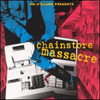 With fifteen different songs from fifteen different musicians, thiscollection simultaneously demonstrates the creative variety found onthe On-U roster. Included are a few exclusive tracks, songs fromupcoming releases, and a smattering of recordings already available onvarious albums. Though a lot of what On-U releases has a reggae or dubfeel to it, Chainstore Massacrehouses some blues-inspired meanderings from Little Axe, a rathererratic sample fest from Adrian Sherwood, a dance-floor rendition ofAsian Dub Foundation's "Cyberabad," and a metal influenced electronicwork-out from Mark Stewart. There's plenty of depth to be found andthat's part of what makes this compilation so great: none of the songssound the same. Ri Ra drops a concrete slab of Irish rap backed by someslick keyboard melodies and a smooth layer of bass and on the nexttrack Junior Delgado unleashes a basic reggae track dedicated toexplaining the benefits of using marijuana. So while there is a goodamount of both upbeat and chilled out tunes, the most awesomelysurprising and beautiful music comes from a musician named Skip "LittleAxe" McDonald. He is the only one on the album that gets two tracks tohimself and he deserves it. "One Drop Blues" is full of layeredguitars, harmonica, a slow and sassy rhythm, and a guitar that paints apicture of a hot day in the park. "My Love I Bring" has Sinead O'Connoron lead vocals and a misty atmosphere provided by an eloquent meshingof electric and acoustic guitar. These two songs warrant buying thecompilation alone, but the compilation as a whole is cohesive anddiverse and is a great appetizer for material that will hopefully bereleased soon.
With fifteen different songs from fifteen different musicians, thiscollection simultaneously demonstrates the creative variety found onthe On-U roster. Included are a few exclusive tracks, songs fromupcoming releases, and a smattering of recordings already available onvarious albums. Though a lot of what On-U releases has a reggae or dubfeel to it, Chainstore Massacrehouses some blues-inspired meanderings from Little Axe, a rathererratic sample fest from Adrian Sherwood, a dance-floor rendition ofAsian Dub Foundation's "Cyberabad," and a metal influenced electronicwork-out from Mark Stewart. There's plenty of depth to be found andthat's part of what makes this compilation so great: none of the songssound the same. Ri Ra drops a concrete slab of Irish rap backed by someslick keyboard melodies and a smooth layer of bass and on the nexttrack Junior Delgado unleashes a basic reggae track dedicated toexplaining the benefits of using marijuana. So while there is a goodamount of both upbeat and chilled out tunes, the most awesomelysurprising and beautiful music comes from a musician named Skip "LittleAxe" McDonald. He is the only one on the album that gets two tracks tohimself and he deserves it. "One Drop Blues" is full of layeredguitars, harmonica, a slow and sassy rhythm, and a guitar that paints apicture of a hot day in the park. "My Love I Bring" has Sinead O'Connoron lead vocals and a misty atmosphere provided by an eloquent meshingof electric and acoustic guitar. These two songs warrant buying thecompilation alone, but the compilation as a whole is cohesive anddiverse and is a great appetizer for material that will hopefully bereleased soon.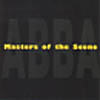 The effects of Abba's music is undeniably cross-cultural and timeless. From the freaky tourists with smelly breath at the NY record shops to the merch-spotting Chris Carter publicity photos, it's hard to find somebody who's life has not been touched. Over the course of a few years, a staggering 24 tracks have been gathered by this tiny operation out of Chicago which bridge the gap between one of the first bands I was fond of in my young childhood to the noisy, more abrasive sounds I'm enjoying in my adulthood. I find this collection both refreshing but question its sub-title.
The effects of Abba's music is undeniably cross-cultural and timeless. From the freaky tourists with smelly breath at the NY record shops to the merch-spotting Chris Carter publicity photos, it's hard to find somebody who's life has not been touched. Over the course of a few years, a staggering 24 tracks have been gathered by this tiny operation out of Chicago which bridge the gap between one of the first bands I was fond of in my young childhood to the noisy, more abrasive sounds I'm enjoying in my adulthood. I find this collection both refreshing but question its sub-title.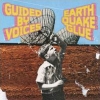 Bob Pollard may be a god to some, but lately there's been a strangedecline in the music he releases outside of Guided By Voices. Airport5's last was an errant mess, the Circus Devils' Harold Pig Memorialhad its moments but ultimately didn't satiate, and even the last GbVrecord was showing some cracks in the surface. Some were saying themost prolific man in rock was running out of steam finally, and thatthis marked the beginning of the end for Pollard and Co. This newrecord should easily choke all the naysayers. Earthquake Glue is the first great Guided By Voices album since Under the Bushes, Under the Starsand marks the real return of the band after their two album romp withTVT. Tighter, leaner, and more ready for action than anything on Universal Truths and Cycles,"My Kind of Soldier" kicks it off with bright guitars and classicPollard vocals. The production both sounds like it has taken a slighthit from the last record, which is just what most fans probably want,while it is improved in other areas; but this sound quality really doesserve these songs. "She Goes Off at Night" and "Useless Inventions"propel the album forward, and the keyboard and harmonica of "DirtyWater" show a new willingness to try something fresh. "I'll Replace YouWith Machines," though, is the real treat, the nugget that proves theboys are back. With its whip-cracking percussion and Doppler Effectmix, the urgency comes across in full force with the "I can't face you"chorus throwing in extra oomph. It's the Ghost of Christmas Past, andit's a pure joy to behold. Elsewhere, "The Best of Jill Hives" is barnone the best song GbV have ever written. The bass line grooves andundulates when Pollard joins, then the other band members come in oneby one. "I don't know how you find your nerve/I don't know how youchoose your words" sounds like the questions of a child to his/herfather after a harsh defeat. Pollard's voice warbles in its mild echo,and no one cares. It's classic GbV, it's got a great hook, and it endsbefore it becomes too commonplace. I admit it: I, too, had my doubtsabout the longevity of the band hearing the last album and EP. "They'vehad a great career, so maybe it would be a good time for them to hangit up, before it starts to get really bad." No more. There's miles leftin this sound yet.
Bob Pollard may be a god to some, but lately there's been a strangedecline in the music he releases outside of Guided By Voices. Airport5's last was an errant mess, the Circus Devils' Harold Pig Memorialhad its moments but ultimately didn't satiate, and even the last GbVrecord was showing some cracks in the surface. Some were saying themost prolific man in rock was running out of steam finally, and thatthis marked the beginning of the end for Pollard and Co. This newrecord should easily choke all the naysayers. Earthquake Glue is the first great Guided By Voices album since Under the Bushes, Under the Starsand marks the real return of the band after their two album romp withTVT. Tighter, leaner, and more ready for action than anything on Universal Truths and Cycles,"My Kind of Soldier" kicks it off with bright guitars and classicPollard vocals. The production both sounds like it has taken a slighthit from the last record, which is just what most fans probably want,while it is improved in other areas; but this sound quality really doesserve these songs. "She Goes Off at Night" and "Useless Inventions"propel the album forward, and the keyboard and harmonica of "DirtyWater" show a new willingness to try something fresh. "I'll Replace YouWith Machines," though, is the real treat, the nugget that proves theboys are back. With its whip-cracking percussion and Doppler Effectmix, the urgency comes across in full force with the "I can't face you"chorus throwing in extra oomph. It's the Ghost of Christmas Past, andit's a pure joy to behold. Elsewhere, "The Best of Jill Hives" is barnone the best song GbV have ever written. The bass line grooves andundulates when Pollard joins, then the other band members come in oneby one. "I don't know how you find your nerve/I don't know how youchoose your words" sounds like the questions of a child to his/herfather after a harsh defeat. Pollard's voice warbles in its mild echo,and no one cares. It's classic GbV, it's got a great hook, and it endsbefore it becomes too commonplace. I admit it: I, too, had my doubtsabout the longevity of the band hearing the last album and EP. "They'vehad a great career, so maybe it would be a good time for them to hangit up, before it starts to get really bad." No more. There's miles leftin this sound yet. Germany's Can is certainly the most influential band to emerge from thefirst wave of krautrock. Their first six studio albums are unparalleledmasterpieces of experimental rock, effortlessly combining jazz andclassical influences with psychedelic guitar rock, ethnic percussionand unhinged vocal improvisations. The past few years have seen theentire back catalog re-mastered and re-released in deluxe CD and LPeditions on Can's own Spoon imprint. Every album, that is, except forthe much-maligned 1978 release Out of Reach,which Can seem eager to completely omit from their discography. Assuch, it has long remained one of their rarest and least talked aboutalbums. Fortunately for completists, Marginal Talent has now issued are-mastered CD of this most obscure of Can records. The received wisdomis that Can began to decline when Japanese vocalist Damo Suzukideparted to join a religious sect after 1976's Future Days.While this is somewhat accurate, hindsight has been kinder to thelater, more homogenized Can albums. We can now retrospectively admitthat Soon Over Babaluma and Flow Motion both containgreat moments, displaying the same ingenious instrumental fusion thatcharacterized Can's most fertile creative period. Record collector loredemands that Out of Reach be a similarly underrated, unsung gem. Unfortunately, this is just not the case. Out of Reach is one of Can's worst albums, and while it has its moments, it must be relegated to the same pile as Saw Delight and Inner Space- disappointing latter-day efforts that make convincing arguments thatCan should have retired earlier. The main reason for this drop inquality was most likely the departure of bassist Holger Czukay,founding member and innovator. To make up for Czukay's noticeableabsence, Rosko Gee and Reebob Kwaku-Baah of the execrable prog-rockband Traffic joined the line-up. Their influence is an unwelcome one,to put it mildly. Gee and Kwaku-Baah bring with them a penchant forpointless jazz-inflected solos that drone on endlessly, watering downthe usually explosive chemistry between Irmin Schmidt, Jaki Liebezeitand Michael Karoli. "Serpentine" introduces this incarnation of Can,with a mildly engaging marriage of ethnic instrumentals and elevatorjazz. The music is far from terrible, but compared to dynamicmasterpieces like Ege Bamyasi and Tago Mago, it'spositively snore-inducing. "Pauper's Daughter and I" is livelier, butis marred by the badly delivered nursery rhyme lyrics from Rosko Gee."November" is by far the best track on the album, the one song wherethe fuzz guitar really lets loose, and the rest of the band'simprovisations build a trippy, pitch-perfect backdrop for Karoli'samazing soloing. "Seven Days Awake" starts out on an interesting note,but soon declines into pointless repetition. "Give Me No 'Roses'"sounds like a bad Traffic outtake, as does the sub-par reggae of "LikeInobe God". The one-and-a-half minutes of "One More Day" is the album'stribal swansong. This is far from essential Can, even more troublingthan 1989's ill-advised reunion album Rite Time. If you are looking to collect every Can album, put Out of Reach right at the bottom of the list.
Germany's Can is certainly the most influential band to emerge from thefirst wave of krautrock. Their first six studio albums are unparalleledmasterpieces of experimental rock, effortlessly combining jazz andclassical influences with psychedelic guitar rock, ethnic percussionand unhinged vocal improvisations. The past few years have seen theentire back catalog re-mastered and re-released in deluxe CD and LPeditions on Can's own Spoon imprint. Every album, that is, except forthe much-maligned 1978 release Out of Reach,which Can seem eager to completely omit from their discography. Assuch, it has long remained one of their rarest and least talked aboutalbums. Fortunately for completists, Marginal Talent has now issued are-mastered CD of this most obscure of Can records. The received wisdomis that Can began to decline when Japanese vocalist Damo Suzukideparted to join a religious sect after 1976's Future Days.While this is somewhat accurate, hindsight has been kinder to thelater, more homogenized Can albums. We can now retrospectively admitthat Soon Over Babaluma and Flow Motion both containgreat moments, displaying the same ingenious instrumental fusion thatcharacterized Can's most fertile creative period. Record collector loredemands that Out of Reach be a similarly underrated, unsung gem. Unfortunately, this is just not the case. Out of Reach is one of Can's worst albums, and while it has its moments, it must be relegated to the same pile as Saw Delight and Inner Space- disappointing latter-day efforts that make convincing arguments thatCan should have retired earlier. The main reason for this drop inquality was most likely the departure of bassist Holger Czukay,founding member and innovator. To make up for Czukay's noticeableabsence, Rosko Gee and Reebob Kwaku-Baah of the execrable prog-rockband Traffic joined the line-up. Their influence is an unwelcome one,to put it mildly. Gee and Kwaku-Baah bring with them a penchant forpointless jazz-inflected solos that drone on endlessly, watering downthe usually explosive chemistry between Irmin Schmidt, Jaki Liebezeitand Michael Karoli. "Serpentine" introduces this incarnation of Can,with a mildly engaging marriage of ethnic instrumentals and elevatorjazz. The music is far from terrible, but compared to dynamicmasterpieces like Ege Bamyasi and Tago Mago, it'spositively snore-inducing. "Pauper's Daughter and I" is livelier, butis marred by the badly delivered nursery rhyme lyrics from Rosko Gee."November" is by far the best track on the album, the one song wherethe fuzz guitar really lets loose, and the rest of the band'simprovisations build a trippy, pitch-perfect backdrop for Karoli'samazing soloing. "Seven Days Awake" starts out on an interesting note,but soon declines into pointless repetition. "Give Me No 'Roses'"sounds like a bad Traffic outtake, as does the sub-par reggae of "LikeInobe God". The one-and-a-half minutes of "One More Day" is the album'stribal swansong. This is far from essential Can, even more troublingthan 1989's ill-advised reunion album Rite Time. If you are looking to collect every Can album, put Out of Reach right at the bottom of the list.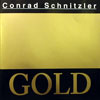 Listening to Schniztler's solo recordings from the 70s is a mixed bagbut quite good fun in several ways. It's like a time capsule, for onething—a throw back to a particular genre of relentless sequencerpatterns, modal noodlings, phasers and filter sweeps. It has theessence of a personal musical identity that influenced the people whowent on to create that genre from it. But the sound on these solorecordings shows that what Schnitzler was able to do, given the timeand opportunity, went well beyond the daily fodder of that genre. Hecould dredge a harsh grittiness from the equipment as well as delicatefinesse that doesn't fit the nostalgic idea of that warm analog soundso fetishized in recent years. The abstract pieces without rhythms workbest. Schnitzler had quite an inventive talent for composing theseevolving layers of otherworldly sounds into science-fiction concertostoo menacing to be merely psychedelic. The curious tension between thefamiliar and the novel, even with an advantage of perspective nearing30 years, highlights the unusual breadth available on Schnitzler'spallet. Where things work less well is when that pallet is applied tocreating the kind of sequencer-driven rock music that others includingTangerine Dream did too much with in the same period. The mechanicalstructures are used as a basis for soloing that just shouldn't havebeen allowed to happen. Such banal melody in the solo lines was notexactly uncommon among the electronic bands of the time. For example,Edgar Froese could throw a crowd into a tizzy of excitement just bypicking up a guitar but, let's be honest, he was never very good atplaying it. It's the same problem here. Listening from the 21stcentaury, one wonders where the sci-fi connotations come from. Were thestyles appropriated for movies and other media to then becomeconventional symbols? Is it a trick of association with the zeitgeist?Or were musicians actually aiming at making space-age sound? Anyway,fans of Schnitzler's 70s solo oeuvre will welcome this addition to theset of color albums. At the very least I can say with certainty thatthe CD booklet represents a succinct response to the problem of what todo with such a ridiculously small page format.
Listening to Schniztler's solo recordings from the 70s is a mixed bagbut quite good fun in several ways. It's like a time capsule, for onething—a throw back to a particular genre of relentless sequencerpatterns, modal noodlings, phasers and filter sweeps. It has theessence of a personal musical identity that influenced the people whowent on to create that genre from it. But the sound on these solorecordings shows that what Schnitzler was able to do, given the timeand opportunity, went well beyond the daily fodder of that genre. Hecould dredge a harsh grittiness from the equipment as well as delicatefinesse that doesn't fit the nostalgic idea of that warm analog soundso fetishized in recent years. The abstract pieces without rhythms workbest. Schnitzler had quite an inventive talent for composing theseevolving layers of otherworldly sounds into science-fiction concertostoo menacing to be merely psychedelic. The curious tension between thefamiliar and the novel, even with an advantage of perspective nearing30 years, highlights the unusual breadth available on Schnitzler'spallet. Where things work less well is when that pallet is applied tocreating the kind of sequencer-driven rock music that others includingTangerine Dream did too much with in the same period. The mechanicalstructures are used as a basis for soloing that just shouldn't havebeen allowed to happen. Such banal melody in the solo lines was notexactly uncommon among the electronic bands of the time. For example,Edgar Froese could throw a crowd into a tizzy of excitement just bypicking up a guitar but, let's be honest, he was never very good atplaying it. It's the same problem here. Listening from the 21stcentaury, one wonders where the sci-fi connotations come from. Were thestyles appropriated for movies and other media to then becomeconventional symbols? Is it a trick of association with the zeitgeist?Or were musicians actually aiming at making space-age sound? Anyway,fans of Schnitzler's 70s solo oeuvre will welcome this addition to theset of color albums. At the very least I can say with certainty thatthe CD booklet represents a succinct response to the problem of what todo with such a ridiculously small page format.  Over three years after the release of their full-length debut, The Noise Made by People,Broadcast have returned full force with a truly exceptional follow-up.While staying true to their moody, late '60s psychedelia-influencedcore sound, the band opens up further to make their retro-basedstylings something that is truly all their own. Haha Sound isboth more playful and more experimental than its successor, evidencedin the opening track, "Colour Me In." Trish Keenan's vocals are sweetand girlish, offsetting the ghostly machinations and audible squeaks inthe background. Her vocals, however, are more often haunting andmelodic such as on "Before We Begin," "Man Is Not a Bird," and "OminousCloud," while on "Pendulum," the first single from the record, Trish'svoice sounds slightly emotionally detached. On "Minim," they cascadelike a hypnotic waterfall, and she turns "Valerie" into a lullabye. Thelyrics are full of rich, abstract imagery—like "If green is chasing thehills over miles / If blue is pursuing the sky" on "Colour Me In;" and"Shake your earrings over my head / Lay down your dreams on my pillowbefore bed" from "Valerie"—that suits Broadcast's music well.
Over three years after the release of their full-length debut, The Noise Made by People,Broadcast have returned full force with a truly exceptional follow-up.While staying true to their moody, late '60s psychedelia-influencedcore sound, the band opens up further to make their retro-basedstylings something that is truly all their own. Haha Sound isboth more playful and more experimental than its successor, evidencedin the opening track, "Colour Me In." Trish Keenan's vocals are sweetand girlish, offsetting the ghostly machinations and audible squeaks inthe background. Her vocals, however, are more often haunting andmelodic such as on "Before We Begin," "Man Is Not a Bird," and "OminousCloud," while on "Pendulum," the first single from the record, Trish'svoice sounds slightly emotionally detached. On "Minim," they cascadelike a hypnotic waterfall, and she turns "Valerie" into a lullabye. Thelyrics are full of rich, abstract imagery—like "If green is chasing thehills over miles / If blue is pursuing the sky" on "Colour Me In;" and"Shake your earrings over my head / Lay down your dreams on my pillowbefore bed" from "Valerie"—that suits Broadcast's music well.
